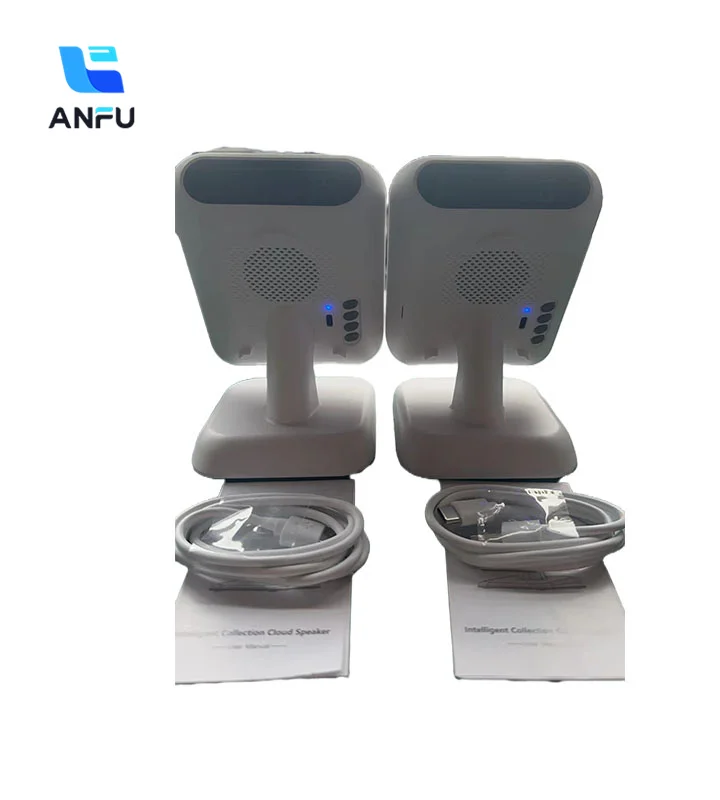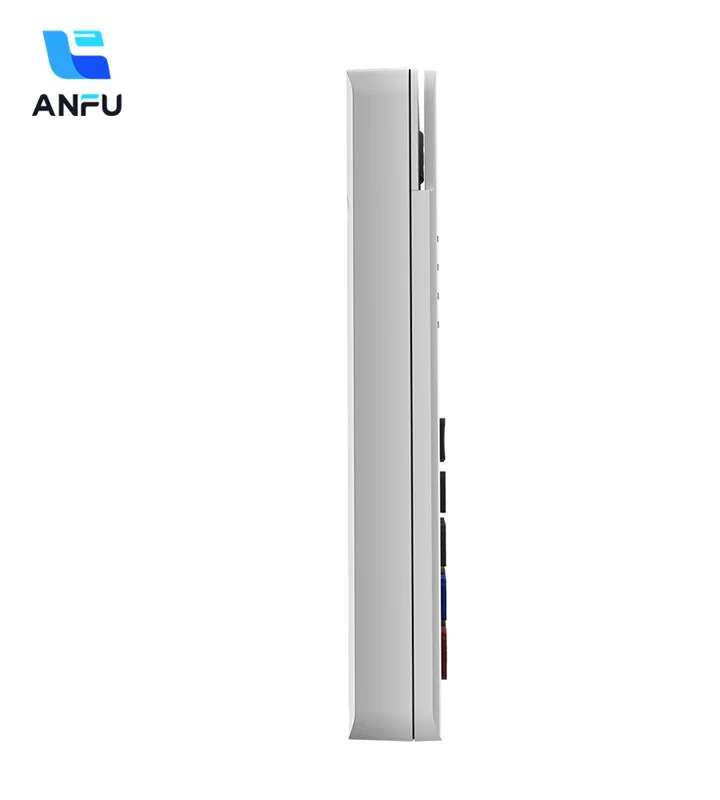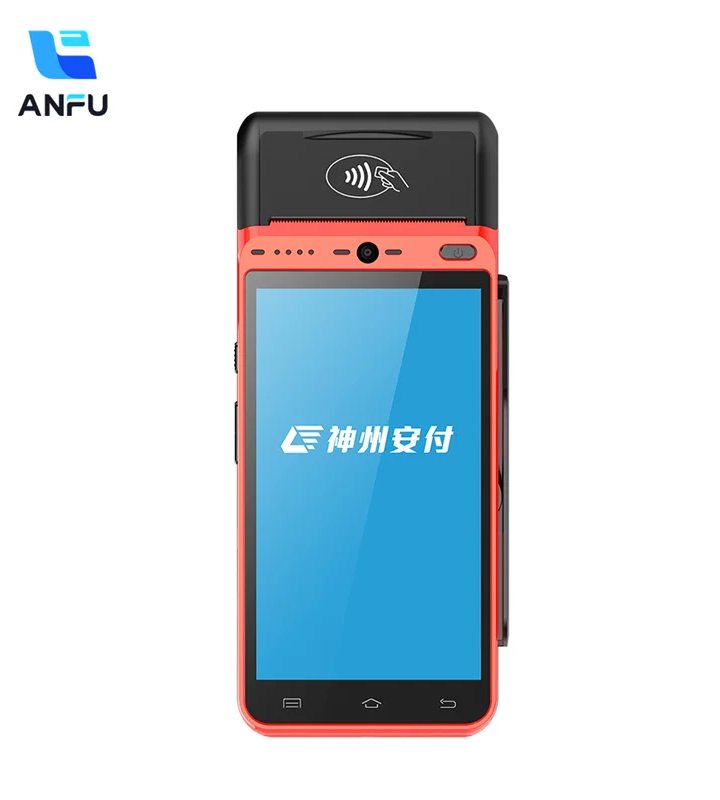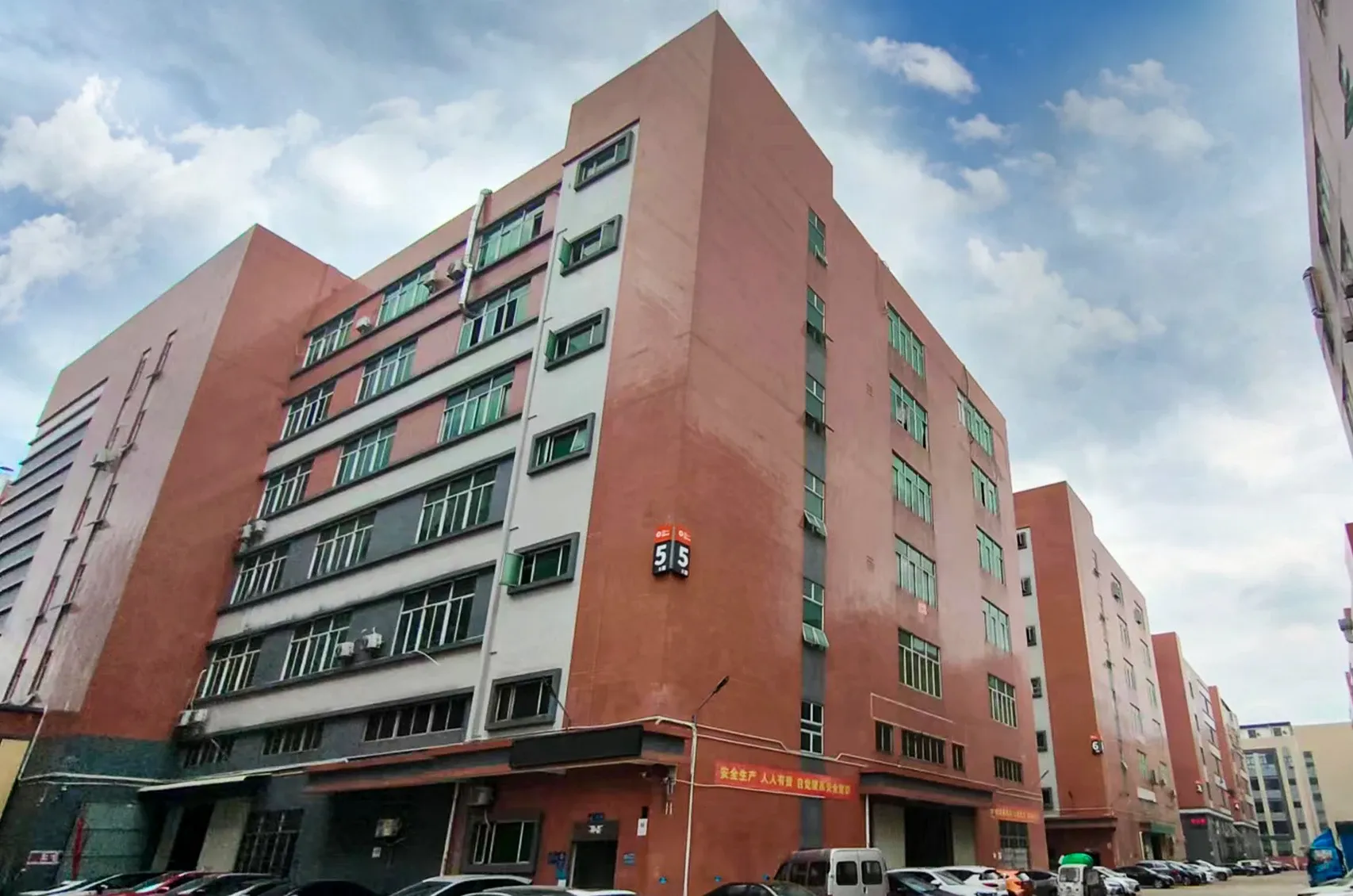
Мини POS машин нь үйл ажиллагаагаа хялбарчлах болон хэрэглэгчийн туршлагыг сайжруулахыг хүсч буй бизнесүүдийн хувьд тоглоомын өөрчлөлт юм. Түүний компакт дизайн нь хязгаарлагдмал зайтай бизнесүүдэд тохиромжтой бөгөөд дэвшилтэт функцууд нь гүйцэтгэлтэй, үр дүнтэй гүйлгээ боловсруулахыг хангадаг. Түүний ойлгомжтой мэдрэгчтэй дэлгэцийн интерфейсээс эхлээд бат бөх аюулгүй байдлын арга хэмжээ хүртэл Мини POS машины бүх тал нь орчин үеийн бизнесийн хэрэгцээг хангахын тулд нарийн төлөвлөсөн. Одоогийн хурдан хөгжиж буй зах зээлд урагшлахыг хүсч буй бизнесүүдийн хувьд Мини POS машин нь одоогийн системд саадгүй нэгдэх чадвар болон өргөн хүрээний функцуудын багцтай тул төгс сонголт юм.

Шэньжөү Анфу Мини POS Машин нь үр дүнтэй худалдааны сайн жишээ юм. Энэ жижиг төхөөрөмж нь борлуулалтыг хурдасгаж, хүлээлтийн хугацааг багасгах нөлөөтэй бөгөөд үйл ажиллагааг оптимизацчилдог. Мини POS машин нь амжилттай гүйлгээ хийхэд шаардлагатай ихэнх шаардлагыг хангадаг - зүйлсийг сканнердах, төлбөр хураах, үйлчлүүлэгчдэд сайн үйлчилгээ үзүүлэх баталгаатай баримт олгох. Дэвшилтэт технологи нь мөн мини POS машины орчин үеийн байдлаас шалтгаалан гүйлгээний боловсруулалтыг хурдасгадаг бөгөөд кредит карт зэрэг олон төрлийн төлбөрийн сонголтыг дэмждэг. Мөн, түүний ойлгомжтой интерфейс нь хүмүүсийн хялбархан суралцахад тусалдаг бөгөөд кассчид төлбөрийн үеэр хамгийн бага алдаа гаргах боломжийг олгодог бөгөөд энэ нь худалдан авалтын туршлагаас тасалдалгүй байхыг баталгаажуулдаг, ингэснээр хэн ч харамсахгүй; учир нь үйлчлүүлэгчдийг аль болох хурдан үйлчилдэг бөгөөд ямар ч бэрхшээлгүйгээр.

Орчин үеийн худалдааны үйл ажиллагаанд холболт зайлшгүй шаардлагатай бөгөөд Шэньжөү Анфу-ийн Мини POS машин нь олон талт байдлаараа хязгааргүй. Энэ нь WiFi, Bluetooth зэрэг янз бүрийн холболтын сонголтуудтай бөгөөд бусад төхөөрөмжүүдтэй эсвэл арын системүүдтэй зөөлөн холбогдох боломжийг олгодог. Мини POS машин нь баркод сканнерууд, баримт хэвлэгчид болон нөөцийн менежментийн системүүдтэй интерфейсээрээ холбогдож чаддаг тул бизнесүүд үүнийг үр ашигтай үйл ажиллагааны гүйцэтгэлд чиглэсэн шуурхай харилцаа холбоо хийхэд ашигладаг. Мөн бизнесүүд Мини POS машиныг санал болгосон уян хатан холболтын сонголтуудын ачаар технологийн өөрчлөлтүүд болон динамик хэрэглэгчийн сонголтуудыг хүлээн авах боломжтой. Энэ төхөөрөмж нь нөөцийн менежментийн системүүд болон CRM програм хангамж зэрэг хэд хэдэн периферийн төхөөрөмжүүд болон арын системүүдийн хооронд бодит цагийн өгөгдөл синхрончлох боломжийг олгодог бөгөөд энэ нь компаниудыг хурдан, мэдээлэлтэй шийдвэр гаргахад тусалдаг. Иймээс энэ төхөөрөмж нь нөөцийн менежмент болон хэрэглэгчийн харилцааны менежментийн програм хангамж зэрэг янз бүрийн периферийн төхөөрөмжүүд болон арын системүүдтэй бодит цагийн синхрончлох боломжтой учраас хурдан шийдвэр гаргахад дэмжлэг үзүүлдэг. Олон төрлөөр холбогдох чадвартай Мини POS машин нь өнөөдрийн байнга өөрчлөгдөж буй худалдааны ертөнцөд компаниудыг хурдан дасан зохицох боломжийг олгож, нийт үйлдвэрлэлийн үр ашгийг нэмэгдүүлдэг.

Өнөөдрийн дэлхийд, жижиглэн худалдааны технологийн амжилт нь бусад системд интеграцчилах чадвараас ихээхэн хамаардаг. Шэньжөү Анфу-ийн мини POS машин нь маш сайн програм хангамж болон тоног төхөөрөмжийн нийцтэй байдалтай. Ямар ч төрлийн төлбөрийн боловсруулалтын платформ, эсвэл бараа материалын менежментийн програм хангамж, эсвэл хэрэглэгчийн харилцааны менежментийн хэрэгслүүд байлаа ч, мини POS машин тэдгээртэй амархан нэгдэж, бүхний дунд илүү сайн харилцаа холбоо болон ерөнхийдөө үр ашигтай байдалд хүргэх болно. Цаашилбал, Мини POS Машин нь гуравдагч талын програмуудтай интеграцчилахыг хөнгөвчлөх API уян хатан байдлыг санал болгодог тул компаниуд өөрсдийн борлуулалтын цэгийн (POS) системийг хувь хүний шаардлагад нийцүүлэн тохируулах боломжтой. Энэ нь бизнесүүд хамгийн сүүлийн үеийн хэрэгслүүд болон технологиудыг ашиглан хурдан өөрчлөгдөж буй жижиглэн худалдааны орчинд үр ашигтай гүйцэтгэлтэй байж чадна гэсэн үг юм.

Борлуулалтын орчин нь мэдрэмтгий хэрэглэгчийн мэдээлэл болон санхүүгийн гүйлгээний аюулгүй байдлыг харгалзан үздэг. Шэньжөү Анфу-ийн Мини POS Машин нь боломжит эрсдлээс сэргийлэх, хувийн мэдээллийг хамгаалах дэвшилтэт аюулгүй байдлын чадваруудыг агуулсан. Энэ хүчтэй хэрэгсэл нь шифрлэлт болон баталгаажуулалтын протоколууд дээр үндэслэн ажилладаг, ингэснээр хийсэн бүр гүйлгээ аюулгүй, найдвартай байдаг. Брендийн итгэлцлийг энэ жижиг машиныг ашиглан хэрэглэгчдийн мэдээллийг цаг хугацаа өнгөрөх тусам хамгаалснаар тогтоож болно. Шифрлэлт болон баталгаажуулалтын протоколуудтай хамт, мини POS машин нь мөн бодит цагийн хяналт болон идэвхтэй аюул заналхийллийн илрүүлэлтийн механизмуудыг агуулдаг бөгөөд энэ нь байнга өөрчлөгдөж буй кибер аюулгүй байдлын аюул заналуудаас хамгаалах нэмэлт давхарга болж үйлчилдэг. Шэньжөү Анфу-ийн аюулгүй байдлын талаархи тасралтгүй хүчин чармайлт нь бизнесийн үйл ажиллагаа нь айдасгүй орчинд явагдаж, үйлчлүүлэгчдийн мэдээлэл нь зөвшөөрөлгүй хүмүүсээс хол, ямар нэгэн хэлбэрийн гуйвуулахгүй байгааг мэдэж байхыг баталгаажуулдаг, ингэснээр тэдний имиджийг бэхжүүлж, урт хугацааны хэрэглэгчийн үнэнч байдлыг нэмэгдүүлдэг.

2015 онд байгуулагдсан Beijing Shenzhou Anfu Technology Co., Ltd нь модуль, хэрэглэгчийн төхөөрөмжүүдийг зориулан дэлгэрэнгүй шинэчлэлийн үйл ажиллагааг хийх хайрцаг технологийн компани юм. Компани нь ихэвчлэн гэрээсийн сертификат, UnionPay картын хүлээн авах терминалын бараа махиныг боловсруулах сертификат, програмчлалын сертификат, ISO9001:2015 үнэ цэнэтэй байгууллагын системийн сертификатыг олгосон.
Тяньжин хотод байрладаг 35,000 квадрат метр талбайтай газар дээр бид MPOS (Мобайл Point of Sale) системүүдийг үйлдвэрлэх 15 үйлдвэрлэлийн линийг ажиллуулж байна. Бидний аж ахуйн нэгж нь 700-с их сурталчил Lagchaa хүний нөөцийг агуулж, гэрээчдийн өөрчлөлтийн хэрэгслүүдийг хангах шинэчлэлийн шийдэлүүдийг олгоход зориулан ажилладаг.
Бидний багаж нь Smart Android POS, Smart Mobile Payment Terminal, Handheld POS Machine, POS Android Terminal, POS Handheld Terminal, Smart POS Terminal, Mini POS Machine, Wireless POS Machine, Android-Based POS Machine, болон Traditional POS Machine гэсэн өгүүлбэртэй байдаг. Shenzhou Anfu-д бид үнэт зүйлсийн үнэмшил, итгэмжлэх чадвар, хамгаалалтыг амжилттай хангахыг зориулж байна.
Манай ухаалаг Android POS, гар утасны POS машин болон бусад бүтээгдэхүүнүүд таны POS хэрэгцээнд зориулсан нэг цэгийн шийдлийг санал болгодог. Бүхэлд нь тоног төхөөрөмжийн сонголтууд болон олон талт програм хангамжийн интеграци хийх чадвартай, манай системүүд таны одоогийн тохиргоонд тасралтгүй интеграцчилж, анхны өдрөөс эхлэн гүйцэтгэлийг баталгаажуулдаг.
Чанарын хяналтын хатуу арга хэмжээ, үйлдвэрлэлийн нарийн процессоор дэмжигдсэн манай бүтээгдэхүүнүүд хосгүй чанар, найдвартай байдлыг баталгаажуулдаг. Үйлдвэрлэлийн процессын бүх шат нь хамгийн өндөр стандартын дагуу явагддаг бөгөөд манай бүтээгдэхүүнүүд дээд зэргийн гүйцэтгэл, бат бөх байдлыг хангахын тулд нарийн чанарын тестийн шалгалтанд ордог.
Үйлдвэрийн шууд үйлдвэрлэгчийн хувьд бид чанарыг алдагдуулахгүйгээр өрсөлдөхүйц үнэтэй бүтээгдэхүүн санал болгодог. Бидний хялбаршуулсан үйлдвэрлэлийн процессууд зардлыг үр дүнтэй хянах боломжийг олгодог бөгөөд ингэснээр бид хэмнэлтийг хэрэглэгчдэдээ дамжуулж чадна. Таны тодорхой шаардлагад нийцсэн үнэлгээний мэдээллийг авахын тулд манай борлуулалтын багтай холбогдоно уу.
Бидний бүтээгдэхүүнүүдийн хамт хялбар суурилуулалт, тохиргоог таатайгаар хийж, өргөн хүрээний сургалтын хөтөлбөрүүд болон идэвхтэй засвар үйлчилгээний дэмжлэгтэйгээр таашаал авч байна. Эхний тохиргооноос эхлээд тасралтгүй засвар үйлчилгээ хүртэл, Шэньжөү Анфу таны бизнесийг анхаарах боломжийг олгож, жигд туршлагыг хангана.
Мини POS Машин нь компакт загвартай, утасгүй холболттой, бат бөх төлбөрийн боловсруулалтын чадвартай, хэрэглэгчдэд ээлтэй интерфэйсийг санал болгодог.
Мини POS Машин нь компакт байдал, хөдөлгөөнтэй байдал, бат бөх шинж чанарууд, сайжруулсан үр ашигтай байдалтай бөгөөд бүх хэмжээний бизнесүүдэд тохиромжтой сонголт болдог.
Тийм ээ, Мини POS Машин нь олон талт бөгөөд жижиглэн худалдааны дэлгүүрүүд, кафе, хоолны машин, болон бусад орчинд амархан нийцдэг.
Мини POS Машин нь бараа материалын хяналтыг, бодит цагийн шинэчлэлтүүдийг, болон үр ашигтай нөөцийн менежментийг дэмжиж, үйл ажиллагааны хяналтыг сайжруулдаг.
